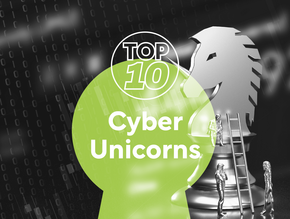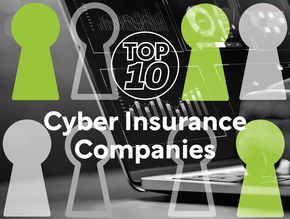Top 10 operational risks facing cybersecurity in 2023

Cybersecurity has become an increasingly pressing concern for organizations around the world. As cyberattacks become more frequent and sophisticated, the need for comprehensive and effective cybersecurity measures has never been greater.
The constantly evolving threat landscape means that professional users must stay up-to-date on the latest risks and vulnerabilities facing their organizations and must remain vigilant in protecting their networks and data from malicious attacks.
To help professional users navigate the complex and ever-changing world of cybersecurity, Cyber Magazine has compiled a list of the top 10 operational risks facing the cybersecurity industry in 2023. This list represents the most pressing and urgent risks that organizations face today, from unpatched systems to insider threats, credential stuffing to ransomware.
10. Zero-day exploits
Zero-day exploits are vulnerabilities in software that are not yet known to the vendor or software developers, which means that there are no patches or fixes available to address them. These vulnerabilities can be discovered by attackers and used to launch targeted attacks. Professional users can reduce their risk of being targeted by zero-day exploits by using security software that can detect and block suspicious activity, as well as by staying up-to-date with the latest security news and advisories. It's also essential to keep all software and operating systems up-to-date with the latest security patches and updates to reduce the risk of exposure to zero-day vulnerabilities.
9. Man-in-the-middle (MitM) attacks
MitM attacks are a type of cyberattack that involves intercepting and altering communication between two parties. MitM attacks can allow attackers to steal sensitive information or inject malicious code into a communication stream. Professional users can protect themselves by using secure communications protocols, such as HTTPS, and by monitoring network traffic for signs of MitM attacks.
8. Password attacks
Password attacks are a type of cyberattack that involves attempting to guess or crack passwords to gain unauthorized access to systems or data. Professional users can protect themselves by using strong, unique passwords and enabling multi-factor authentication (MFA) wherever possible. IT teams can also use automated tools to detect and block password attacks.
7. Insider threats
Insider threats are a type of cybersecurity risk that involves employees or other insiders who use their access to systems or data to intentionally or unintentionally cause harm. Professional users can protect themselves by implementing access controls and monitoring for unusual or suspicious activity on their networks. Employee training and education can also help reduce the risk of insider threats.
6. Distributed Denial of Service (DDoS) Attacks
DDoS attacks are a type of cyberattack that involves overwhelming a target system with traffic from multiple sources. DDoS attacks can cause significant disruption to business operations and are often used as a distraction to launch other types of attacks. Professional users can protect themselves by using DDoS protection services and implementing rate-limiting controls on their networks.
5. Malware
Malware is a type of software that is designed to cause harm to computer systems or networks. Malware can take many forms, including viruses, worms, trojan horses, and spyware. Professional users can protect themselves by using antivirus software, and firewalls, and by staying up-to-date with software updates and security patches.
4. Phishing
Phishing is a social engineering attack that involves sending emails or other communications that trick recipients into revealing sensitive information or downloading malicious software. Professional users can reduce their risk of falling victim to phishing attacks by using spam filters, and anti-phishing software, and by training employees on how to identify and avoid phishing emails.
3. Credential stuffing
Credential stuffing is a type of cyberattack that involves using a list of stolen credentials (such as usernames and passwords) from one breach to try to gain access to another account. Professional users can protect themselves by using strong, unique passwords and enabling multi-factor authentication (MFA) wherever possible. IT teams can also use automated tools to detect and block credential stuffing attempts.
2. Unpatched systems
Software updates and security patches are important for fixing vulnerabilities in software. Failure to apply necessary software updates and security patches can leave systems vulnerable to known vulnerabilities that attackers can exploit. Professional users can reduce their risk of exploitation by regularly applying updates and patches to their operating systems and software applications. IT teams should also scan networks for outdated and unpatched systems, and make sure that all systems are brought up to date as soon as possible.
1. Ransomware
Ransomware is malware that encrypts files on a computer or network and demands a ransom in exchange for the decryption key. Ransomware attacks can cause significant financial damage and lead to the loss of important data. Professional users can take measures to protect themselves by keeping their antivirus software and operating systems up-to-date and regularly backing up important data. It's also important to train employees on how to identify and avoid phishing emails, which are a common delivery method for ransomware.






